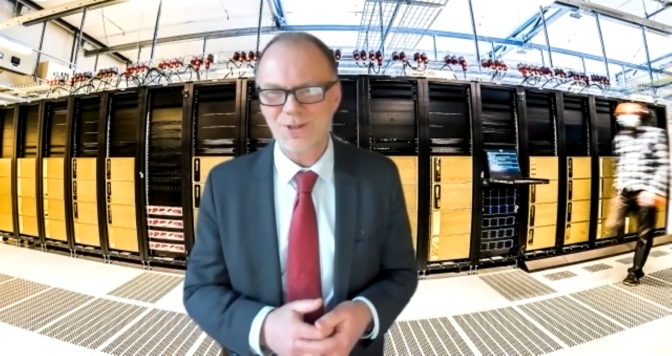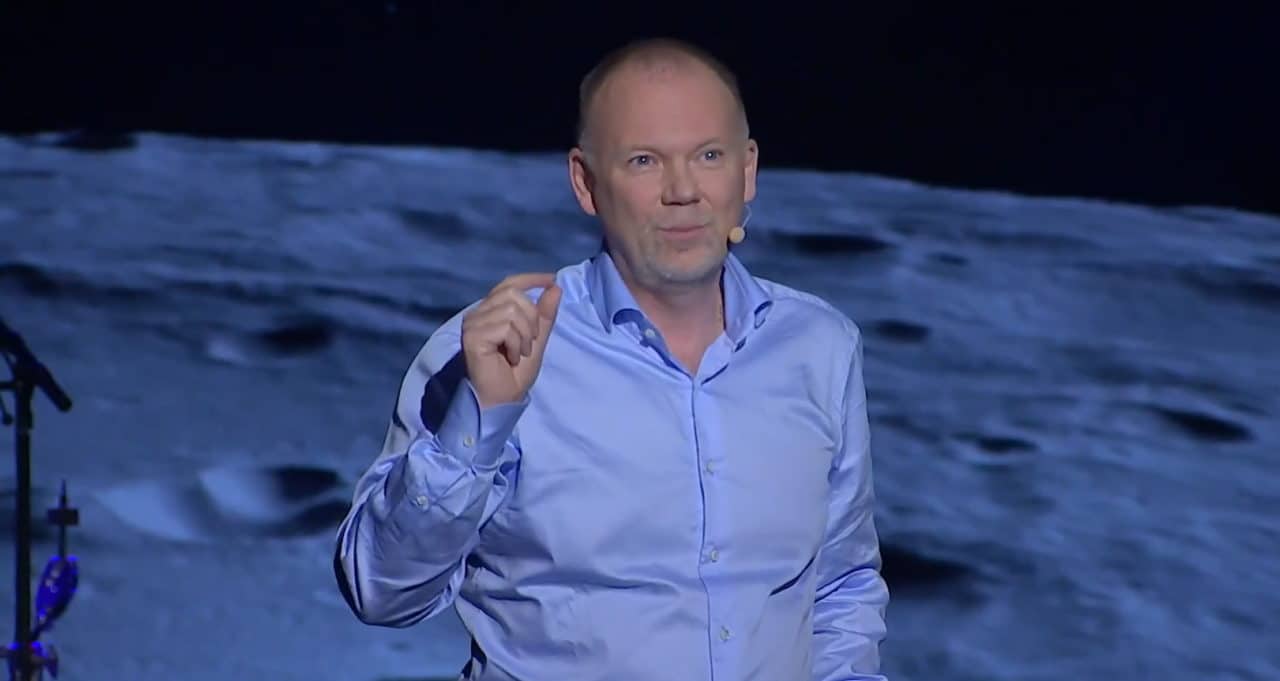Sweden is outfitting its AI supercomputer for a journey to the cutting edge of machine learning, robotics and healthcare.
It couldn’t ask for a better guide than Anders Ynnerman (above). His signature blue suit, black spectacles and gentle voice act as calm camouflage for a pioneering spirit.
Early on, he showed a deep interest in space, but his career took a different direction. He established the country’s first network of supercomputing centers and went on to pioneer scientific visualization technologies used in hospitals and museums around the world.
Today, he leads Sweden’s largest research effort, WASP — the Wallenberg Artificial Intelligence, Autonomous Systems and Software Program — focused on AI innovation.
The Big Picture
“This is a year when people are turning their focus to sustainability challenges we face as a planet,” said the Linköping University professor. “Without advances in AI and other innovations, we won’t have a sustainable future.”
To supercharge environmental efforts and more, Sweden will upgrade its Berzelius supercomputer. Based on the NVIDIA DGX SuperPOD, it will deliver nearly half an exaflop of AI performance, placing it among the world’s 100 fastest AI supercomputers.
“A machine like Berzelius is fundamental not only for the results it delivers, but the way it catalyzes expertise in Sweden,” he said. “We’re a knowledge-driven nation, so our researchers and companies need access to the latest technology to compete.”
AI Learns Swedish
In June, the system trained GPT-SW3, a family of large language models capable of drafting a speech or answering questions in Swedish.
Today, a more powerful version sports 20 billion parameters, a popular measure of a neural network’s smarts. It can help developers write software and handle other complex tasks.
Long term, researchers aim to train a version with a whopping 175 billion parameters that’s also fluent in Nordic languages like Danish and Norwegian.
One of Sweden’s largest banks is already exploring use of the latest GPT-SW3 variant for a chatbot and other applications.
A Memory Boost
To build big AIs, Berzelius will add 34 NVIDIA DGX A100 systems to its cluster of 60 that makeup the SuperPOD. The new units will sport GPUs with 80GB of memory each.

“Having really fat nodes with large memory is important for some of these models,” Ynnerman said. Atos, the system integrator, is providing “a very smooth ride getting the whole process set up,” he added.
Seeking a Cure for Cancer
In healthcare, a data-driven life sciences program, funded by the Wallenberg Foundation, will be a major Berzelius user. The program spans 10 universities and will, among other applications, employ AI to understand protein folding, fundamentally important to understanding diseases like cancer.
Others will use Berzelius to improve detection of cancer cells and navigate the massive mounds of data in human genomes.
Some researchers are exploring tools such as NVIDIA Omniverse Avatar Cloud Engine and NVIDIA BotMaker to create animated patients. Powered by GPT-SW3, they could help doctors practice telemedicine skills.
Robots in Zero Gravity
Sweden’s work in image and video recognition will get a boost from Berzelius. Such algorithms advance work on the autonomous systems used in modern factories and warehouses.
One project is exploring how autonomous systems act in space and undersea. It’s a topic close to the heart of a recent addition to WASP, researcher Christer Fuglesang, who was named Sweden’s first astronaut in 1992.
Fuglesang went to the International Space Station in 2006 and 2008. Later, as a professor of physics at Sweden’s Royal Institute of Technology, he collaborated with Ynnerman on live shows about life in space, presented in the WISDOME dome theater at the Visualization Center C Ynnerman founded and directs.
Thanks to his expertise in visualization, “I can go to Mars whenever I want,” Ynnerman quipped.
He took NVIDIA founder and CEO Jensen Huang and Marcus Wallenberg — scion of Sweden’s leading industrial family — on a tour of outer space at the dome to mark the Berzelius upgrade. The dome can show the Martian surface in 8K resolution at 120 frames per second, thanks to its use of 12 NVIDIA Quadro RTX 8000 GPUs.
Inspiring the Next Generation
Ynnerman’s algorithms have touched millions who’ve seen visualizations of Egyptian mummies at the British Museum.
“That makes me even more proud than some of my research papers because many are young people we can inspire with a love for science and technology,” he said.
A passion for science and technology has attracted more than 400 active Ph.D. candidates so far to WASP, which is on the way to exceeding its goal of 600 grads by 2031.
But even a visualization specialist can’t be everywhere. So Ynnerman’s pet project will use AI to create a vibrant, virtual museum guide.
“I think we can provide more people a ‘wow’ experience — I want a copilot when I’m navigating the universe,” he said.
